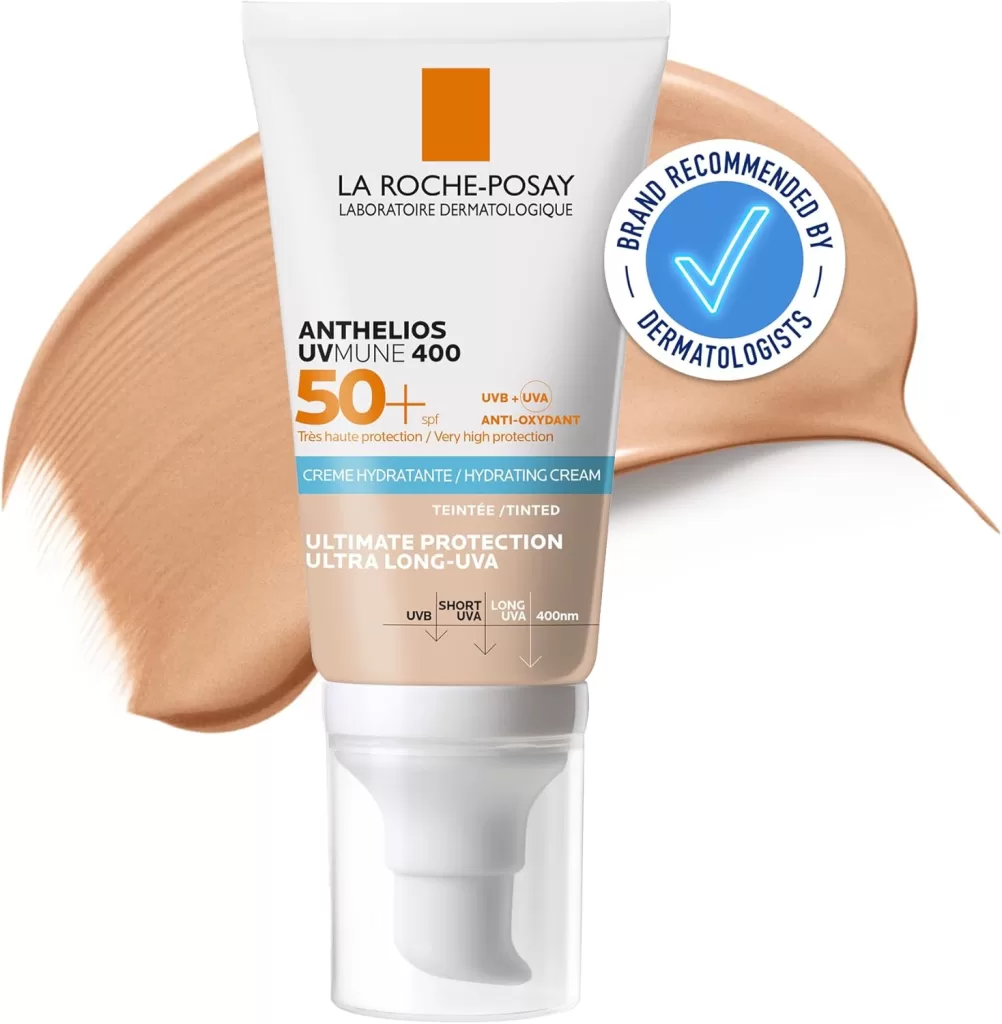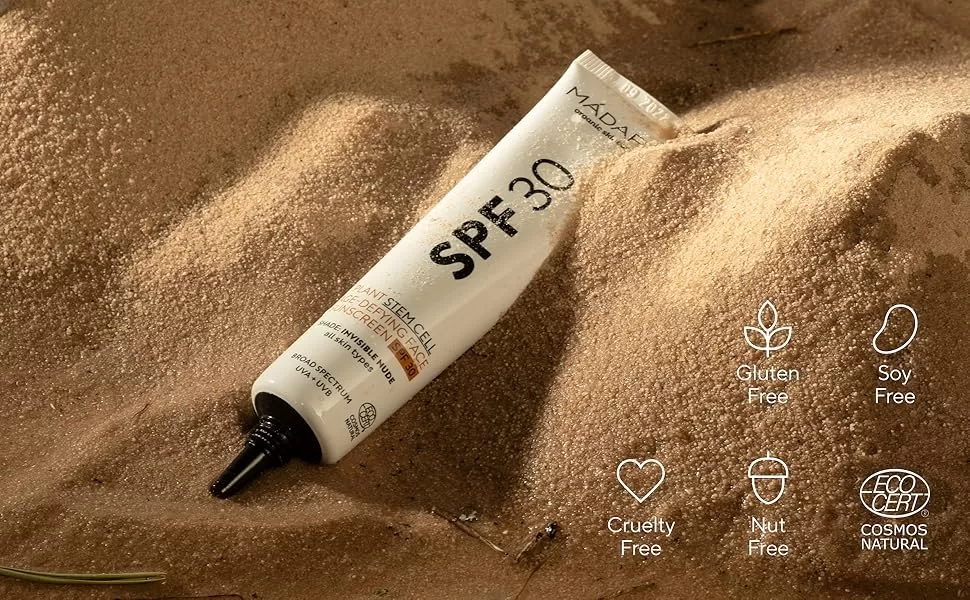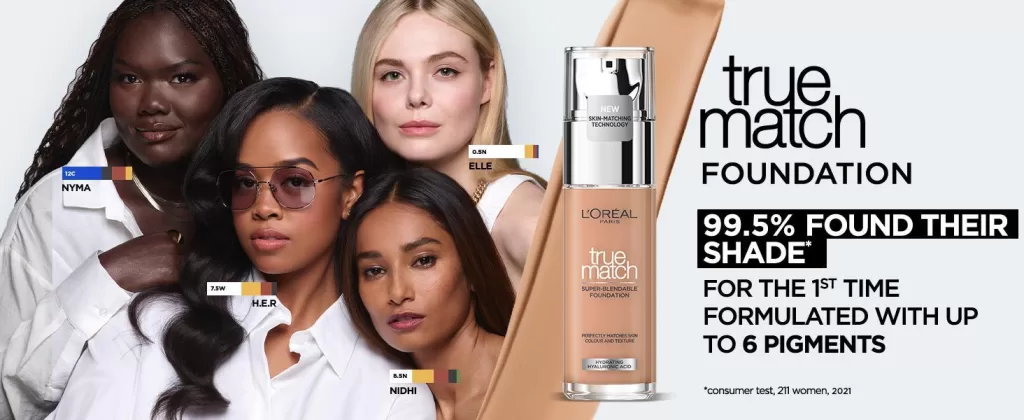Discover Tinted SPF: Your Ultimate Sunscreen and Foundation Duo
Mixing Sunscreen and Foundation: Achieving a flawless, natural-looking complexion while protecting your skin from harmful UV rays sounds ideal, doesn’t it? Blending sunscreen with foundation for tinted SPF is a simple, effective beauty hack that gives you the best of both worlds. Whether you’re aiming for a light, breathable finish or looking to streamline your morning routine, this guide has you covered.

La Roche-Posay Anthelios Uvmune 400 Hydrating Tinted Cream SPF50 For Sensitive Skin 50ml
Benefits of Mixing Sunscreen and Foundation
1. Streamlined Routine
Combining sunscreen and foundation cuts down on steps in your routine, saving time without compromising skincare or coverage.
2. Natural Coverage
Tinted SPF offers a lightweight, even skin tone with a dewy finish that’s perfect for everyday wear.
3. Added Sun Protection
While foundation alone offers no sun protection, mixing it with sunscreen provides a shield against UV damage.
The Benefits of Tinted Sunscreen Over Traditional Zinc Sunscreens
Tinted sunscreen offers a unique set of advantages that can elevate your skincare routine. If you’re pondering the benefits, here’s why it stands out compared to traditional zinc sunscreens:
- No More White Cast: One of the main drawbacks of using typical zinc sunscreens is the noticeable white residue they tend to leave on the skin. Tinted sunscreens, however, are designed to blend seamlessly with your skin tone, providing a more natural appearance.
- Added Glow: These formulations often impart a subtle glow, enhancing your skin’s natural beauty while still providing essential sun protection.
- Versatile Usage: Tinted sunscreens can be worn alone for a fresh, dewy look, making them perfect for a quick morning routine. Alternatively, they provide an excellent base for those who prefer a layered makeup routine. Simply apply mineral makeup powder over the tinted sunscreen for additional coverage.
- Streamlined Skincare: By combining the benefits of sun protection and a slight tint, these products simplify your routine. They eliminate the need for multiple layers, allowing you to moisturize, protect, and even out your complexion all with one product.
Ultimately, if you’re looking to streamline your morning regimen and avoid the chalky finish of traditional options, a tinted sunscreen might just be the game-changer you need.
Why Do Skin Experts Consider Sunscreen the Ultimate Beauty Essential?
Sunscreen is often hailed as the most crucial step in any skincare routine, and for good reason. Renowned dermatologists and beauty experts prioritize its importance above all other skincare products. Here’s why:
- Shield Against Harmful UV Rays: The primary role of sunscreen is to protect your skin from the sun’s ultraviolet (UV) rays. These rays can lead to serious skin issues, including the risk of skin cancer. No amount of cleansing or hydrating can counteract the damage caused by unprotected sun exposure.
- Prevent Premature Aging: Exposure to the sun accelerates the aging process, leading to wrinkles, fine lines, and a loss of skin elasticity. Applying sunscreen daily helps maintain a youthful complexion by preventing these age-related changes.
- Protect Against Pigmentation: Sun exposure can cause uneven skin tone and pigmentation. Sunscreen acts as a barrier, minimizing sunspots and discoloration, and allowing your natural skin tone to remain even and bright.
- Enhance Other Skincare Products: Without sunscreen, the effectiveness of serums, moisturizers, and other skincare treatments is compromised. Protection from UV damage ensures that your skincare efforts aren’t in vain.
Integrating sunscreen into your daily routine is indispensable, allowing you to enjoy the benefits of other beauty products while securing your skin’s long-term health. Choose a broad-spectrum formula with an SPF of at least 30 for optimal protection. Protecting your skin with sunscreen is a simple yet powerful step towards healthier, more resilient skin.

Ambre Solaire Ultra-hydrating Sun Cream SPF50+
Garnier Ambre Solaire Ultra-hydrating sun lotion SPF50+ provides advanced UVA and UVB protection.
Ultra-hydrating formula that helps to protect against the drying effects of the sun for a soft feeling and hydrated skin.
The formula is enriched with sustainably sourced shea butter. The filtration system features Mexoryl SX + Mexoryl XL to help protect against:
- UVB: Immediate sun-induced skin damage
- UVA: long-term sun-induced skin damage and premature skin-ageing.
How Does Mixing Sunscreen with Foundation Enhance Sun Protection?
Combining sunscreen with your foundation can significantly boost your skin’s defense against harmful UV exposure. Here are the key ways this simple blend can work wonders for your skin:
- Additional Protection Layer: When you mix sunscreen with your foundation, you’re essentially adding an extra barrier against the sun’s damaging rays. This is particularly beneficial on days you may rush out the door without separately applying sunblock.
- Improved Coverage: A foundation-sunscreen mix ensures that your skin receives even coverage, reducing the chances of missing spots that might be more prone to UV damage.
- Convenience and Consistency: By integrating sun protection into your daily makeup routine, you’re less likely to skip this crucial step. The convenience makes it easier to maintain consistent sun protection.
- Adaptable Application: Depending on the day’s UV index and your planned activities, you can adjust the ratio of sunscreen to foundation for more or less protection, ensuring your skin gets exactly what it needs.
Incorporating sunscreen into your makeup strategy not only simplifies your routine but ensures your skin stays shielded throughout the day. By seamlessly blending these two products, you fortify your skincare regimen and uphold a strong defense against the sun.
For those who find traditional zinc sunscreens leave a white cast, a tinted sunscreen could be the perfect solution. It blends effortlessly with your skin tone, offering a natural glow without compromising on sun protection. This dual-purpose product can be used in various ways to suit your preference:
- Minimalist Approach: Use the tinted sunscreen alone for a fresh-faced, dewy look. This option is perfect for those who love a natural appearance and want to keep their routine light and breezy.
- Enhanced Coverage: If you prefer more coverage, simply add a layer of mineral makeup powder over the tinted sunscreen. This combination provides a polished finish while maintaining the benefits of sun protection.
By integrating tinted sunscreen into your daily routine, you not only streamline your beauty regimen but also ensure that your skin remains protected and radiant.
The Importance of Applying Sunscreen Before Leaving the House
When it comes to skincare, protection is key. One of the most crucial steps you can take for your skin’s health is applying sunscreen before stepping outside.
Safeguard Against UV Damage
Even on overcast days, harmful UV rays can penetrate clouds and reach your skin. These rays are notorious for causing premature aging, sunburn, and even increasing the risk of skin cancer. By applying sunscreen, you’re creating a barrier that helps shield your skin from these damaging effects.
Maintain Healthy and Radiant Skin
Healthy skin is beautiful skin, and keeping your complexion in top condition involves daily sun protection. Not only does sunscreen prevent damage, but it also helps maintain an even skin tone, reducing the appearance of dark spots and preventing hyperpigmentation.
Proper Application for Maximum Benefit
For best results, apply sunscreen before any makeup or skincare products. This way, it can fully absorb and form a protective layer. Allow a few minutes for the sunscreen to settle into your skin before layering on products like foundation or moisturizer.
Remember, a daily sunscreen habit can make a significant difference in preserving your skin’s health and appearance. Whether the forecast is sunny or overcast, a few seconds in the morning can prevent long-term damage.
How to Apply Sunscreen: Physical vs. Chemical
When it comes to applying sunscreen, the order in which you layer your skincare products can significantly impact their effectiveness. Here’s how the application process differs between physical and chemical sunscreens:
Physical Sunscreens
- Skincare First: Begin with your usual skincare routine. This involves cleansing, moisturizing, and applying any serums or treatments you use daily.
- Apply Sunscreen: Next, apply your physical sunscreen. These sunscreens work by sitting on top of the skin and reflecting UV rays. They contain active mineral ingredients like zinc oxide or titanium dioxide.
- Makeup Last: After your sunscreen has settled, you can proceed with your makeup routine, including foundation and other cosmetics.
Tip: Allow a few minutes between each step to ensure each layer has time to set. This break provides a perfect opportunity to relax or get pumped up with your favorite tune.
Chemical Sunscreens
- Sunscreen First: When using a chemical sunscreen, apply it directly to clean skin before any other products. This allows the active ingredients to be absorbed into the skin effectively. Chemical sunscreens need to interact with the top layer of your skin to create a shield against harmful UV radiation.
- Follow with Skincare: Once the sunscreen is in place and has been absorbed, proceed with your regular skincare routine. Finish with makeup if desired.
Understanding these distinctions ensures you get the most out of your sun protection, safeguarding your skin from potential damage while maintaining the efficacy of your skincare regime.
The Pros and Cons of Mixing Sunscreen with Foundation
Pros
- Enhanced Sun Protection: By combining sunscreen with foundation, you add an extra shield against harmful UV rays. This can be especially beneficial on those rushed mornings when applying sunscreen might slip your mind.
- Streamlined Routine: A blend of foundation and sunscreen can simplify your beauty regimen. It allows you to achieve radiant skin while ensuring you remain protected from the sun’s damaging effects.
- Improved Makeup Application: Mixtures of these two products may result in a more even makeup application. The combined texture can provide better adherence, giving your face a smooth, flawless finish.
Cons
- Reduced Sunscreen Efficacy: Altering the sunscreen formulation by mixing it with foundation may diminish its ability to protect your skin. Most sunscreens are tested extensively to guarantee the labeled sun protection factor (SPF); tampering with it might dilute its effectiveness.
- Uneven Coverage: DIY mixtures can lead to inconsistent application, potentially leaving some areas of your face less protected than others, thus compromising your overall sun defense.
- Potential Skin Reactions: For those with sensitive skin, combining sunscreen with foundation could provoke allergic reactions or irritation. It’s important to patch-test such mixtures, especially if you have a history of skin sensitivity.
While it can be tempting to rely on the convenience of products like tinted moisturizers or BB creams that include SPF, it’s essential to recognize their limitations. These products often feature a lower SPF than the recommended level for optimal protection, typically SPF50 or higher for facial coverage. Additionally, the efficacy of the sunscreen might be compromised by other ingredients in the formula, potentially reducing its protective qualities.
Using non-sunscreen products with SPF might offer some level of sun defense, but they should not replace dedicated sunscreens in your skincare routine. By understanding these issues, you can make more informed decisions about how to effectively protect your skin from harmful UV rays.

Skincare Meets Makeup: How to Boost Your Foundation with Serums
Safety Tips for Mixing Sunscreen and Foundation
Mixing sunscreen and foundation can be effective, but it’s important to follow these guidelines:
1. Don’t Dilute Too Much
Using too much foundation can reduce the effectiveness of the sunscreen. The SPF rating of sunscreen relies on applying it at the recommended quantity.
2. Layer, Don’t Just Mix
For full protection, consider applying a base layer of sunscreen before blending a small amount with foundation for added coverage.
3. Choose Compatible Products
Ensure that both products have similar bases (e.g., water-based or oil-based) to prevent separation or pilling.
4. Understand Your Sunscreen Type
- Physical Sunscreens: Apply your skincare products first, then a layer of sunscreen, followed by your foundation. Physical sunscreens work by sitting on top of the skin to block UV rays, so they should be applied after skincare to function effectively.
- Chemical Sunscreens: These should be applied directly to the skin before any other products. Chemical sunscreens need to absorb into the skin to protect effectively, so start with them, followed by your skincare routine and then your foundation.
5. Give It Time
Allow a few minutes between each layer to let the products settle and absorb. This pause can ensure that each layer performs its function without interference, giving you the best protection and finish.
By taking these precautions, you can maintain effective sun protection while enjoying the benefits of makeup coverage.

L’Oreal Paris True Match Tinted Serum Foundation, 1% Hyaluronic Acid, Hydrating Formula, Replumps Skin in 1 Hour for a Natural Glowing Finish, 30 ml,…The perfect Skincare and Makeup hybrid: Tinted Serum with 1% Hyaluronic Acid that hydrates like a serum and covers like a foundation
Step-by-Step Guide: Mixing Sunscreen and Foundation
A. Step 1: Select the Right Sunscreen
- Use a broad-spectrum sunscreen with SPF 30 or higher.
- Avoid thick or greasy formulas that can affect the finish of your foundation.
B. Step 2: Pick a Compatible Foundation
- Opt for lightweight, sheer, or medium-coverage liquid foundations for easy blending.
- Matte or full-coverage foundations may not mix as seamlessly.
The Benefits of Tinted Sunscreen Over Traditional Zinc Sunscreens
Tinted sunscreen offers a unique set of advantages that can elevate your skincare routine. If you’re pondering the benefits, here’s why it stands out compared to traditional zinc sunscreens:
- No More White Cast: One of the main drawbacks of using typical zinc sunscreens is the noticeable white residue they tend to leave on the skin. Tinted sunscreens, however, are designed to blend seamlessly with your skin tone, providing a more natural appearance.
- Added Glow: These formulations often impart a subtle glow, enhancing your skin’s natural beauty while still providing essential sun protection.
- Versatile Usage: Tinted sunscreens can be worn alone for a fresh, dewy look, making them perfect for a quick morning routine. Alternatively, they provide an excellent base for those who prefer a layered makeup routine. Simply apply mineral makeup powder over the tinted sunscreen for additional coverage.
- Streamlined Skincare: By combining the benefits of sun protection and a slight tint, these products simplify your routine. They eliminate the need for multiple layers, allowing you to moisturize, protect, and even out your complexion all with one product.
Ultimately, if you’re looking to streamline your morning regimen and avoid the chalky finish of traditional options, a tinted sunscreen might just be the game-changer you need.
The Ideal Order for Applying Skincare, Sunscreen, and Makeup
When it comes to layering your skincare products, getting the sequence right can make all the difference. Here’s a straightforward guide to follow:
- Start with Skincare Begin with your regular skincare routine. Cleanse and moisturize your skin to create the perfect base. This ensures your skin is hydrated and ready for subsequent products.
- Apply Sunscreen
- For Physical Sunscreens: Apply your physical (mineral) sunscreen, which typically contains ingredients like zinc oxide or titanium dioxide. These need to sit on the surface of your skin to effectively block UV rays.
- For Chemical Sunscreens: If using a chemical sunscreen, apply it first, directly onto clean skin. Chemical sunscreens must absorb into the skin to provide protection, so they need to be the first layer.
- Move on to Makeup After allowing your sunscreen to set for a few minutes—giving you a perfect reason to enjoy a short break—apply your foundation and other makeup. This waiting time is crucial for ensuring that each layer has adequately settled before moving to the next.
By following this order, you’ll maintain the efficacy of each product, protect your skin from harmful UV rays, and achieve a flawless makeup application.

How to Choose the Perfect Foundation with Sun Protection
Finding the right foundation that offers sun protection while complementing your skin tone can be a game-changer in your beauty routine. Here’s a step-by-step guide to help you make the best choice:
1. Match Your Skin Tone
- Foundation Tone: Start by ensuring the foundation matches your natural skin tone. This will give you a seamless look and avoid any noticeable lines.
- Undertones: Pay attention to your undertones (cool, warm, or neutral) to further refine your selection.
2. Consider Consistency and Feel
- Lightweight Formulas: Opt for a lightweight formula that doesn’t feel heavy or cakey. This will allow your skin to breathe and maintain a natural appearance.
- Texture Preferences: Decide whether you prefer a liquid, powder, or cream foundation. Each type has its own application benefits and finishes.
3. SPF and Sun Protection
- Broad Spectrum Protection: Look for foundations labeled “broad spectrum,” which ensure protection from both UVA and UVB rays. This is vital for comprehensive sun coverage.
- SPF Rating: Go for the highest SPF rating available to maximize protection. Remember, layering products with SPF (like a moisturizer and foundation) does not increase the overall SPF coverage.
4. Additional Benefits
- Blue Light Defense: Consider foundations that offer protection against blue light emitted from devices, as this can contribute to skin damage over time.
- Anti-Oxidants and Moisturizers: Some foundations come enriched with anti-oxidants or moisturizing properties to help combat daily environmental stressors.
5. Testing and Trials
- Patch Testing: Before committing to a foundation, test a small amount on your jawline to ensure there’s no adverse reaction and that the shade blends well.
- Daylight Check: Always test your foundation in natural light to see the true match and finish.
By taking these factors into account, you can find a foundation that not only enhances your natural beauty but also provides essential sun protection. Investing time in choosing the right foundation will ultimately safeguard your skin against premature aging and other sun-induced damage.
What to Look for in a Foundation for Optimal Sun Protection
Finding the perfect foundation that offers adequate sun protection involves more than just skin tone matching. Here’s what you need to consider:
- Sun Protection Factor (SPF):
Opt for a foundation with a high SPF rating. This provides a robust defense against harmful rays. Keep in mind that SPF numbers aren’t additive; a combination of SPF 15 and SPF 30 won’t give you SPF 45 protection. Aim for the highest individual SPF available. - Broad-Spectrum Coverage:
Ensure your foundation offers broad-spectrum protection, which shields against both UVA and UVB rays. This is vital for comprehensive coverage, akin to choosing a well-rounded sunscreen. - Lightweight Formula:
Choose a lightweight foundation to prevent a cakey appearance. Such foundations can be effortlessly paired with moisturizers, enhancing skin hydration while offering protection from not only natural sunlight but also blue light from electronic devices. - Additional Benefits:
Some foundations include antioxidants or other beneficial ingredients to help fight environmental stressors. While not a replacement for sunscreen, these can complement your protective measures against daily exposure. - Everyday Suitability:
Your foundation should be versatile, offering sun protection whether you’re outdoors or inside near windows. It should also address modern concerns, like blue light exposure from screens.
By selecting a foundation that meets these criteria, you’ll be better equipped to protect your skin against the damaging effects of sun exposure while enjoying a flawless complexion.
C. Step 3: Find the Right Ratio
- Start with a 2:1 ratio of sunscreen to foundation.
- Adjust according to your desired coverage and finish.
D. Step 4: Mix Thoroughly
- Use the back of your hand or a clean mixing palette to blend the two products evenly.
E. Step 5: Apply Strategically
- Use a makeup sponge or brush to apply the mixture evenly across your face.
- Focus on areas that need more coverage while ensuring the sunscreen layer is evenly distributed.

The Most-Asked Makeup Questions, Answered
We all want to look our best, but there can be so much confusion around makeup application! Here are answers to some of the most common makeup questions we get: The Most-Asked Makeup Questions, Answered Concealing Acne For a flawless foundation application over blemishes, try color correcting first. Use a green color corrector to neutralize…
Best Sunscreen Types for Mixing Sunscreen and Foundation
1. Mineral Sunscreens
- Titanium dioxide and zinc oxide sunscreens work well, providing a smooth base for foundation.
- Recommended for sensitive skin.
2. Lightweight, Fluid Sunscreens
- Gel or water-based sunscreens blend seamlessly with foundation for a natural finish.
3. Tinted Sunscreens
- Already infused with pigment, these work as a standalone or can be further customized with foundation.

Mineral vs. Chemical Sunscreens: A Dermatologist’s Guide | Unveiling Beauty Secrets
Mixing Sunscreen and Foundation: When to Use This Method
- Daily Wear: Perfect for errands, work, or casual outings.
- Light Coverage Days: Offers a breathable, radiant look without feeling heavy.
- Quick Morning Routines: Saves time while ensuring your skin is protected.
Tips for Achieving a Safe, Sun-Kissed Glow Without Mixing Sunscreen and Foundation
Maintaining a radiant, sun-kissed look without compromising your skin’s health is easier than you might think. Here are some strategies to keep you glowing safely:
1. Opt for an SPF-Infused Primer
- Choose a primer with built-in sun protection, such as SPF 30 or higher. This provides a protective base layer that shields your skin from harmful UV rays while enhancing the longevity of your makeup. It also works wonders to smooth and refine your complexion.
2. Choose a Mineral Foundation with SPF
- Mineral foundations that include SPF can offer both coverage and protection. They contain natural pigments that blend seamlessly for a flawless finish while utilizing ingredients like zinc oxide or titanium dioxide to protect against the sun.
3. Use SPF Setting Powder
- A setting powder with SPF is ideal, especially for oily skin types. It not only sets your makeup but also adds an extra layer of sun protection, helping to maintain a matte, shine-free complexion throughout the day.
4. Practice Layering Techniques
- For those who wish to use their favorite non-SPF foundation, apply a layer of sunscreen as the first step in your routine. This ensures you’re fully protected without sacrificing your preferred makeup products.
5. Exfoliate for an Even Glow
- Regularly exfoliating removes dead skin cells, which can help your sun-kissed look appear more even and last longer. It prepares your skin to receive SPF moisturizers or tinted products more effectively.
These tips provide both the protection you need and the glow you want, ensuring your skin remains radiant and safe. Remember, investing in good skincare practices enhances the overall health and appearance of your skin, allowing you to embrace your natural glow confidently.

Safety Tips for Mixing Sunscreen and Foundation
Mixing sunscreen and foundation can be effective, but it’s important to follow these guidelines:
1. Don’t Dilute Too Much
Using too much foundation can reduce the effectiveness of the sunscreen. The SPF rating of sunscreen relies on applying it at the recommended quantity.
2. Layer, Don’t Just Mix
For full protection, consider applying a base layer of sunscreen before blending a small amount with foundation for added coverage.
3. Choose Compatible Products
Ensure that both products have similar bases (e.g., water-based or oil-based) to prevent separation or pilling.
To achieve that perfect balance between sun protection and a flawless complexion, consider these additional tips:
4. Opt for SPF-Infused Products
Instead of just mixing, select makeup products that already contain SPF. A primer with SPF can provide a protective base, creating a barrier between your skin and makeup while ensuring consistent sun protection. This approach helps maintain the integrity of both skincare and makeup.
5. Use Mineral-Based Options
Mineral foundations with SPF are an excellent choice, offering full coverage while protecting your skin. Ingredients like zinc oxide and titanium dioxide not only provide sun protection but also help in achieving an even skin tone by camouflaging imperfections.
6. Apply Setting Powder with SPF
For those with oily skin, a mineral setting powder with SPF can add an extra layer of protection and help control shine throughout the day. This step keeps your makeup looking fresh while enhancing your defense against UV rays.
7. Exfoliate for an Even Glow
Gently exfoliating your skin can remove dead skin cells, allowing your sun-kissed glow to appear more even and last longer when using tinted moisturizers with SPF. This step ensures that your skin is smooth and ready for makeup application.
By integrating these practices, you can enjoy the benefits of both sunscreen and makeup without compromising on protection or appearance. Prioritizing smart skincare choices will enhance your natural radiance and safeguard your skin from harmful sun exposure.
Mixing Sunscreen and Foundation: Pro Tips for Best Results
- Prepping the Skin
Always cleanse and moisturize your face before applying your tinted SPF blend. - Avoid Flashback
For photography, avoid sunscreens with high titanium dioxide content, which can cause a white cast. - Reapply When Needed
Reapply sunscreen every 2-3 hours to maintain sun protection, even with the tinted blend.
What Are the Benefits of Exfoliating the Skin When Using Tinted Moisturizers with SPF?
Exfoliating your skin offers several advantages, particularly when paired with tinted moisturizers that include SPF. Here’s why making exfoliation a regular part of your skincare routine can be beneficial:
- Enhanced Glow: Exfoliation removes dead skin cells, revealing a fresher, more radiant layer of skin. This process makes it easier for your skin to showcase that natural, sun-kissed glow you’re aiming for.
- Even Skin Tone: By sloughing off old skin cells, exfoliation helps in achieving a more even skin tone. This smoother surface allows tinted moisturizers to glide on more uniformly, providing that flawless finish.
- Longevity of Glow: The removal of dead skin ensures that your sun-kissed look lasts longer. Without the build-up of old cells, your skin maintains its luminous appearance throughout the day.
- Improved Absorption: Exfoliated skin enhances the absorption of moisturizing ingredients found in tinted moisturizers with SPF. This means your skin stays hydrated and nourished, maximizing the benefits of both the moisturizer and sun protection.
- Optimal Sun Protection: By applying products to smoothly exfoliated skin, the SPF in tinted moisturizers is more effective, ensuring better protection against harmful UV rays.
Incorporating both exfoliation and a high-quality tinted moisturizer with SPF—such as those from reputable brands like Neutrogena, Aveeno, and EltaMD—can be a game changer for your skincare regimen. Embrace these steps to achieve a healthy, radiant complexion that not only looks good but also stays protected.

Unlocking the Perfect Sheer Glow: Mixing Foundation and Moisturizer
Achieving a flawless yet natural-looking complexion is a goal for many. Mixing foundation with moisturizer can help create a custom coverage level that feels lightweight while still evening out skin tone. This combination not only enhances your skin’s radiance but also caters to various skin types, making it a versatile addition to your beauty routine.…
Mixing Sunscreen and Foundation: FAQs
1. Can I use powder foundation instead of liquid?
Powder foundation doesn’t mix well with sunscreen, but it can be layered over your sunscreen base.
2. Will mixing sunscreen and foundation reduce SPF effectiveness?
Yes, it can dilute the SPF. Apply a layer of sunscreen first, then use the mixture for added coverage.
3. What skin types benefit most from this method?
This method works for all skin types. For oily skin, use mattifying sunscreen; for dry skin, choose a hydrating formula.
4. Can I mix tinted moisturizer instead of foundation?
Absolutely! Tinted moisturizers blend well with sunscreen and provide lightweight coverage.
5. What tools should I use to apply the mixture?
It’s generally best to apply sunscreen first, followed by foundation. This ensures that the sunscreen forms a protective barrier on your skin, while the foundation provides coverage and evens out skin tone. However, there are some tinted sunscreens that combine both sunscreen and foundation in one product. If you’re using a tinted sunscreen, you can apply it directly to your skin as you would a regular foundation.
Exploring Primers with SPF vs. Sunscreen-Foundation Combos
When considering makeup or skincare products with SPF, it’s essential to understand how they compare to standalone sunscreens. Using a primer with SPF differs significantly from mixing sunscreen directly with your foundation. Here’s why:
- SPF Levels and Protection:
- While some sun protection is better than none, products like tinted moisturizers or BB creams often contain a lower SPF than the recommended SPF50 or above for optimal facial protection. This can leave your skin vulnerable to UV rays if not supplemented with additional sunscreen.
- Application Consistency:
- Primer with SPF: Ensures consistent and even sunscreen application across the face, minimizing missed spots.
- Sunscreen-Foundation Mix: Can lead to uneven coverage and potential gaps in sun protection, especially if not thoroughly blended.
Product Formulation and Interaction:
- Primer with SPF: Designed to work seamlessly with makeup, often providing a smooth base and enhancing foundation wear.
- Sunscreen-Foundation Mix: Can alter the foundation’s texture and finish, potentially making it appear patchy or cakey. Moreover, the inclusion of SPF in non-sunscreen products may see its effectiveness compromised by other ingredients.
- SPF Effectiveness:
- Primer with SPF: Typically formulated with specific considerations for makeup application, ensuring the SPF remains effective.
- Sunscreen-Foundation Mix: May reduce the sunscreen’s effectiveness if not properly formulated or applied in sufficient quantity.
- Convenience vs. Efficacy:
- Primer with SPF: Simplifies your routine by combining two steps into one.
- Sunscreen-Foundation Mix: Requires an extra step and careful blending, which can be time-consuming. However, it’s crucial to remember that while convenience is appealing, it shouldn’t compromise your skin’s protection against UV damage.
Ultimately, while makeup and skincare products with SPF offer added convenience, they should ideally be used in conjunction with a dedicated sunscreen to ensure your skin is fully protected.

How Setting Powder with SPF Benefits Oily Skin
Setting powder infused with SPF offers dual advantages for individuals grappling with oily skin. Here’s how:
- Sun Protection: The inclusion of SPF provides an essential layer of defense against harmful UV rays. While regular sunscreen application is crucial, a setting powder with SPF can offer an additional guard, reducing the risk of sun damage.
- Oil Control: If your skin tends to shine just a few hours into the day, you’re not alone. Setting powder effectively absorbs excess oil, keeping your complexion matte and fresh for longer periods. This is particularly beneficial during warm weather when oil production is often increased.
- Makeup Longevity: By setting your makeup with a layer of powder, you help lock foundation and concealer in place. This not only enhances the longevity of your makeup but also maintains a smooth appearance throughout the day without the hassle of frequent touch-ups.
In summary, using a setting powder with SPF can not only help control oil and shine but also provide crucial sun protection, making it a smart addition to your skincare routine.
Consistent Protection
A primer with SPF ensures an even application of sun protection across your face. This consistency can be challenging to achieve by blending sunscreen with foundation, potentially resulting in uneven coverage and diminished UV defense.
Dual Benefits
Primers with SPF often offer dual functionality: they serve as both skincare and makeup base. They typically moisturize, smooth skin texture, and create a strong barrier against pollutants, all while providing sun protection. Mixing sunscreen with foundation usually compromises these benefits, as the sunscreen can alter the texture and effectiveness of your foundation.
Longer-lasting Makeup
With an SPF-infused primer, your makeup tends to adhere better and lasts longer throughout the day. Mixing sunscreen with foundation can thin the formula, potentially leading to quicker makeup breakdown and requiring more frequent touch-ups.
Simplified Routine
Opting for a primer with SPF simplifies your skincare and beauty routine. It eliminates the extra step of mixing and ensures you maintain effective sun protection without altering your makeup’s finish or coverage.
In summary, using an SPF primer offers more reliable protection, maintains your makeup’s integrity, and streamlines your daily routine.
What Are Some Alternative Methods to Mixing Sunscreen with Foundation for Sun Protection?
When it comes to protecting your skin while achieving a flawless look, mixing sunscreen with foundation isn’t your only option. Here are some expert-recommended alternatives to keep your skin both radiant and shielded from the sun:
- Opt for SPF Primers
Instead of blending sunscreen with your foundation, consider starting with a primer that already contains SPF. Products like Supergoop! Unseen Sunscreen SPF 40 act as a primer while providing broad-spectrum protection. They create a barrier between your skin and makeup, helping to ensure even coverage and consistent sun defense. - Choose Foundations with Built-in SPF
A mineral foundation fortified with SPF can deliver excellent coverage and sun protection. Look for foundations from brands like BareMinerals or IT Cosmetics, which provide a natural finish along with SPF 30 or higher. These products utilize ingredients such as zinc oxide and titanium dioxide, offering both protection and a flawless base. - Incorporate SPF Setting Powders
Especially useful for oily skin types, setting powders with SPF add a supplemental layer of defense. These can reduce shine and help maintain your makeup throughout the day. Options like Colorescience Sunforgettable Brush-On Shield SPF 50 are ideal for touch-ups while staying protected. - Layer Your Products
If you prefer to stick with your current foundation, apply your regular sunscreen before makeup as a separate step. This method allows you to ensure adequate sun protection, regardless of your foundation’s SPF content. Remember, layering products enhances their efficacy—so start with sunscreen, then follow with your usual makeup routine.
By integrating these strategies, you can confidently enjoy a sun-protected, glowing complexion without compromising on style or safety.
Mixing Sunscreen and Foundation: Final Thoughts
Mixing sunscreen and foundation is a versatile technique for achieving a glowing, protected complexion. With the right products and application method, you can simplify your routine while prioritizing your skin’s health.
The Benefits of Using Mineral Foundation with SPF
Mineral foundation with SPF offers a unique blend of beauty and skincare benefits that can enhance your daily routine. Here are several reasons why you might consider incorporating it into your regimen:
- Seamless Coverage
Mineral foundations are known for their ability to blend effortlessly with your natural skin tone. This ensures a smooth and even complexion, helping you achieve a polished look. - Customizable Finish
With mineral pigments, these foundations allow you to control the level of coverage, whether you prefer a light touch or full coverage. - Sun Protection
A significant advantage is the built-in sun protection. Formulas typically include ingredients like zinc oxide and titanium dioxide, which act as physical sunscreens. This helps safeguard your skin from harmful UV rays, reducing the risk of sunburn and long-term sun damage. - Skin-Friendly Ingredients
Unlike traditional foundations that can clog pores, mineral variations are often free from harsh chemicals and additives. This makes them a gentler choice, especially for those with sensitive or acne-prone skin. - Camouflage Imperfections
These foundations not only enhance your skin’s appearance but also effectively conceal imperfections such as blemishes, redness, and uneven skin tone.
By choosing a mineral foundation with SPF, you enjoy a multi-tasking product that beautifies while offering essential sun protection. It’s a practical and efficient choice for anyone looking to streamline their beauty routine without compromising on skincare.
Embrace the tinted SPF trend and enjoy radiant, sun-safe skin every day!

Explore more articles like this @ Where And How Resources
If you found this article helpful, don’t forget to share it with your friends and followers!

